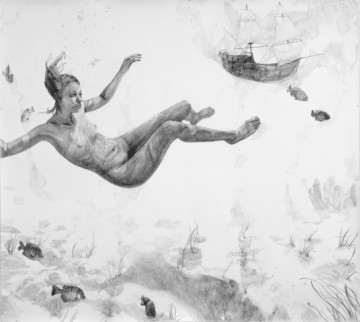I’ve lived in Miami my whole life, and yet I first heard about Art Basel when I was in my senior year of high school. That was 2009 and I was 18. My “backyard” happened to be one of the greatest art havens in the world, yet I was oblivious to its existence. So were my neighbors, my parents, the townies, teachers, my friends. My introduction to the art world began when I signed up for an internship program. I searched Google for internships at museums and galleries. Search result after search result, the surprise and shock kept adding up. I had never heard of these places. What was the Design district? What was Wynwood? It was only when I scored my internship that a serious education on the Miami art scene ensued.
Despite my obvious ignorance, the people I encountered in Miami’s bustling art community couldn’t have been more welcoming. People offered me advice, invited me to openings, introduced me to their peers, and told me where to go to see the best collections. They were eager to show me, to have me experience and contribute to a unique and valuable community.
So with a scene that is open to anyone that shows interest, that hosts prestigious art fairs, that is home to incredibly talented artists, that offers impressive collections and museums–how is it that Miami gets lost, never making it to that point in time where its stories and successes can roll off people’s tongues? How is it possible to live a mere 30 minutes away from the arts district, from where Art Basel Miami takes place, and not have a clue about any of it?
Herein lies the problem. There is a lack of communication, or better yet, an inconsistent and ineffective flow of information. If news of Miami’s cultural events can’t make it past a 30-minute car ride, how is it supposed to reach the rest of the world? And I’m not talking about Basel and art fair press which has made its way around the world, I’m talking about the real meat of the Miami art world burger, the things that make it past the first week of December, the artists, the exhibits, the curators, the institutions that make such a delicious and happening community possible.
Here in lies the solution. WE NEED DIALOGUE. We need to talk about what happens in our communities with groups outside of our communities and WE NEED TO DOCUMENT our stories and contributions. Naturally we talk about things we care about, and in a sense it can be used to measure levels of importance. Documenting works very much the same way. It says “we care about this, this is important so we have to document it.” It gives us the power to believe the unbelievable, to see what we couldn’t see in person or to re-live what we did see in person. It gives us the power to reference the past and to learn from it. The point is that in doing these things the vital people and events that contribute to the scene aren’t lost in a sea of obscurity, where they remain completely unacknowledged. This is the way to avoid the trap of cultural amnesia.
In this video produced for Dirty Pink 305, artist Cristina Peterson gives us her take on the lack of engagement and intellectual dialogue she’s experienced during her years as an artist in Miami.
Post written by Tina Acevedo of Dirty Pink 305.





Pingback: » DP305 blogs on Art 21